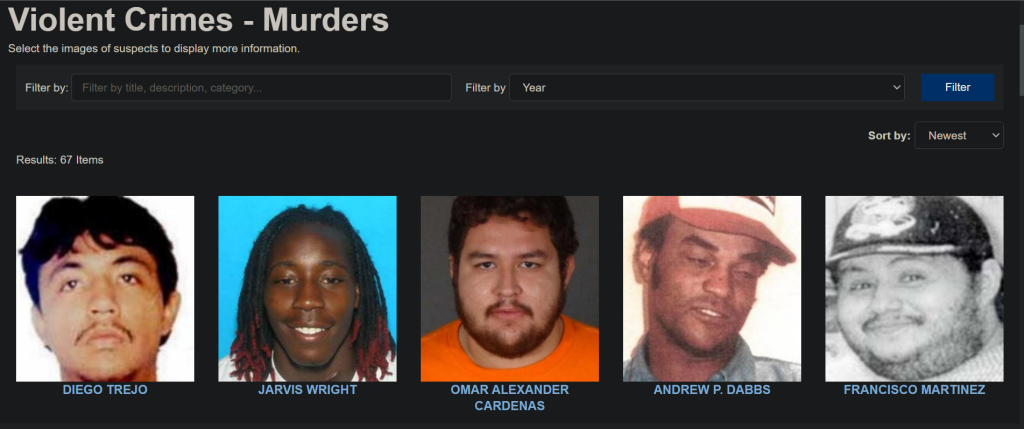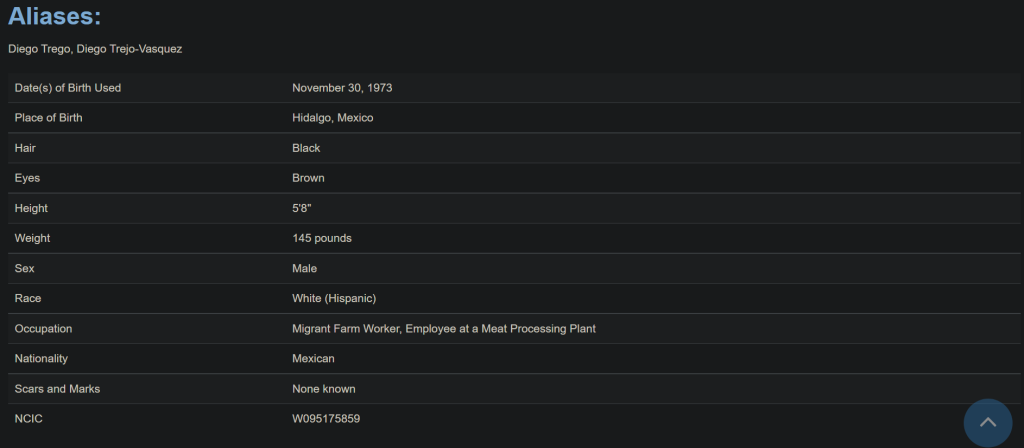- How to look up old murders: Steps
- Can a civilian solve cold cases?
- How can you help solve old murders?
- How to look up old murder cases
- A journalists guide to accessing old court documents
- The court may redact some personal information
- How do I find older cold case files?
- What if the court sealed the record?
- Murder is a federal offense
- The murder accountability project: Where can I find cold case files?
- How do detectives solve cold cases?
- How to look up old murders/cold cases: summary
Old murder (cold) case files are public records in the US, meaning anyone can view them through a simple request. You may submit a request at the local courthouse or local law enforcement headquarters.
Note: Arrest reports and crime and incident reports are not public records in some states. You may need a court order to view them.
How to look up old murders: Steps
Starting your search from the fundamentals is always a wise strategy. Crucial details such as the person’s name, the year of their death, and the location of the incident can significantly aid your information hunt. A complimentary resource you can utilize is the Murder Accountability Project. This website provides extensive data on homicide cases, even those dating quite a way back in time.
Once you’ve got the basics, you can begin to go more in depth:
- Check for newspaper articles or other on-line resources. Somebody may have already done the digging for you.
- Begin your search for old homicide cases by reviewing local criminal case files. To that end. Visit local law enforcement and request access to archives or submit a “Public Access Request.”
- You may request access to police records in person or via mail.
- Police records are not always free. After submitting your request, the department will tell you how much you owe for the report. Most states make it possible for you to obtain a copy from the arresting agencies website.
- NARA does not have records from state or county courts. They only have records of federal courts.
- State courts prosecute homicides, but under some circumstances, murder becomes a federal crime.
- PACER gives you access to federal criminal case files only. Local courts keep official records. Use PACER case locator to find homicide cases.
- You may request unsolved case files at the court house where the homicide occurred.
- Court records are public records.
- To access sealed records, you must have a court order.
- Check our cold case repository database to see if you can find information about your cold case online. Please note that if you are using a .gov website from outside of the United States you may need to use a VPN to gain access.
Following the steps above will give you the digital tools you need to solve cold cases, read on to find out how to use them.
Can a civilian solve cold cases?

According to the National Institute of Justice, America has a cold case crisis. Because of that, law enforcement and resources are stretched thin. 2017’s FBI Uniform Crime report says that investigators solved 60% of homicides in the year. That leaves over 250000 unresolved homicides cases, including a backlog.
What is the difference between murder, homicide, and manslaughter?
Rules to follow – Are private investigations legal?
Private investigations are legal if you follow the law. However, during investigations, you break the law if you commit any of the following acts:
- Impersonate a police officer: the law does not permit private investigators to carry a badge, wear a uniform, or in any way impersonate a police officer.
- You cannot legally arrest a suspect: in some states the law allows private citizens to make a private arrest if the suspect has committed a felony. However, this may lead to a lawsuit or unlawful detention charges, so it is safer to call law enforcement. In other words, do not take the law into your own hands.
- Trespass: trespassing on private property is a crime, meaning, private investigators cannot legally break into someone else’s home or property.
- Breach of privacy: the law does not allow private investigators to wiretap or in any way breach someone else’s privacy.
If you have enough evidence to warrant a search or arrest of a suspect, we recommend contacting law enforcement.
Can civilians investigate cold cases?
Authorities in almost all states encourage civilians to do what they can to help resolve old cases without breaking the law. For instance, Connecticut’s Division of Criminal Justice has a Cold Case Playing Deck that highlights 52 unresolved homicides, unidentified remains, and missing persons cases. If you are in the state, these cards are the first place to start when looking up high-profile old murders or unresolved missing person cases.
How can you help solve old murders?
You may do independent investigations or join law enforcement.
Here is how:
Apply for the FBI Volunteer program
Suppose you have never investigated a case before. In that case, the FBI Intern Program is the perfect place to build your investigation skills and get some insight into how detectives and investigators solve cases. The program offers volunteers ten-week training where they will work side by side with experienced FBI agents.
It is worth noting that you must pass FBI suitability standards, and there are usually only 400 spots.
What are the qualifications?
- The candidate must be a US citizen.
- You must have a grade point average of 3.0 or higher.
- Enrolled in an accredited college or university.
You may apply for the program here.
How to look up old murder cases
Step 1: gather data from newspapers, old news articles, or videos.
Murder and missing person cases make the news in all states. Because of that, if you know the deceased’s name and where the incident occurred. The first step is to check local news reports from that date. For old cases or cases that happened before the internet, public libraries are a good data source.
You will have to go through old newspapers.

How do I find old newspapers for free?
The internet is home to at least three newspaper archives.
Google Historical Newspapers is free and the most reliable of the three. The newspapers are arranged in alphabetical order, and you have the option to search the archive or web.
The best part is that the service is free.
Newspapers.com and Newsbank’s Newspaper Archive offer the service at a fee.
Use YouTube or local news websites.
Apart from newspapers, you may visit local media outlet websites or YouTube. The idea is to gather as much information as possible before requesting access to law enforcement files.
A journalists guide to accessing old court documents
If the judge did not seal the record, the files should be available online. So how do you access them?
Visit Electronic Filing CM/ECF or PACER
Electronic Filing (CM/ECF) is a system that allows attorneys to submit case files electronically. You may use it to access:
- Pleadings
- Motions
- Petitions
To use the system, you must create a PACER account here.
What is PACER?

Pacer stands for Public Access to Court Electronic Records. Within the system. There are one billion files filed at all federal courts in the country.
After you create an account, you have two search options. (1) search the nationwide index. (2) search for a case in federal court.
The reason we recommend using newspapers and other sources before using PACER is. You will need specific details to find the file you want.
Note: Court CM/ECF look-up allows you to find specific links to Pacer and court-specific information such as RSS feeds and contact information. So, we suggest starting here if the cold case involves bankruptcy.
The court may redact some personal information
According to the United States Courts website, the court may redact some personal information to preserve privacy. Redacted information may include:
- The name of minors
- Social security numbers
- Date of birth.
- Home addresses
- Financial account information
- Taxpayer ID.
Cases of interest or notable cases
As mentioned, murder or missing person cases garner a lot of public interest. Because of that, there is a special section for such cases on PACER named “cases of interest” or “notable cases” where you will find trial exhibits, docket entries, and court orders.
How do I find older cold case files?

Murders or cases that occurred before 1999, according to the courts, are in paper format. Consequently, you can access them at NARA. What is NARA?
NARA Stands for the National Archives and Records Administration. As the name suggests, NARA is the nation’s record keeper that retains all materials and documents created by the United States federal government. Note that NARA only holds between one to three percent of what it considers important documents permanently. That means it may delete older records of resolved cases.
How do you request Access to NARA records?

Access to the records is by appointment only, meaning you must have a virtual consultation before you visit the archive in person. There are also some restrictions because of coronavirus. Therefore, it is vital to request access before visiting.
To access NARA files, you have two options.
What to remember:
- All files posted on CM/EMF are available via PACER
- You may request NARA forms online.
- You must contact the court where the case was filed to access paper documents at NARA
- PACER services are not free.
What if the court sealed the record?
Juvenile records, summons or warrants, documents containing juror information, and records that may reveal defense strategies used by court-appointed lawyers are not public documents. Remember, the court has the authority to seal these documents to protect the victims, informants, and information that may compromise ongoing criminal investigations or the accused due process rights.
For example, if a witness cooperates with authorities, the court may seal the informant’s hearing transcripts and criminal case documents to protect the witness from possible retaliation.
In short: You will need a court order to access sealed records.
Murder is a federal offense
The FBI is the primary agency tasked with investigating murders and other federal crimes. The agency has a most wanted page where you can view and gather suspect information. To demonstrate, below are snippets of Diego Trejo, a suspected murderer.

You can see his poster, Aliases, and descriptions on his profile.

Details of the crime.

The FBI also has a murder victim page that offers rewards for anyone who submits tips or information that may lead to the perpetrator’s arrest.
The murder accountability project: Where can I find cold case files?
The murder accountability project is an open-source website that gives investigators free access to homicide files from federal, local, state, and FBI archives. The service is available to the public and law enforcement officers.
We recommend using it because the service is free, the data is accurate, and you can access it anywhere without special permission. In addition, their archives go back to 1965 and include over 22000 homicides not reported to the justice department.
What to remember
- Murder accountability project acquires unreported homicides under the freedom of information act.
- The service is available to anyone, and the simplified search engine allows you to search the site based on the victim’s age, sex, race, and location, time frame, and connections and patterns.
- You may widen your search parameters to the entire country.
- Murder accountability project is a non-profit organization funded by user donations.
How do detectives solve cold cases?
Investigators and detectives use the resources above to solve cold cases.
The question is, how?
Look for errors in the investigations and who performed the investigations

A case may go unsolved for decades because of errors made during investigations, corruption, lack of sufficient evidence, lost or destroyed evidence, the victim’s lifestyle or societal status, bad police work, the accused financial status, and many other reasons.
What you must do is review everything. That is documents, videos, and related material to build a narrative. The idea is to spot discrepancies in the narratives then look for answers. For instance, if the victim was a prostitute or gangster, investigators may lack the motivation to solve the case.
What about the investigator?
Did the individual have any interest in the outcome of the case? Was the investigator motivated financially or in any other way not to bring the preparator to justice?
By looking at the files and records of the case, you may find evidence that others did not see.
Gather data from correctional facilities
If the suspect is in prison, you may request to interview the individual or someone who shared a cell with the suspect. But limit what you share about yourself because you may be putting your safety at risk.
How to look up old murders/cold cases: summary
Option 1: submit a request to local authorities
- Contact the appropriate state, or federal court.
- Request access to criminal records electronically or via written request.
Option 2: Visit national archive court records/NARA.
Option 3: Search local newspapers or news reports.
Option 4: Go to Murder Accountability Project.
Related:
How to find recent arrests
What is the difference between first, second, and third degree murder?
Manslaughter Laws Explained
Difference between murder, homicide, and manslaughter.

1 thought on “How to Look up Old Murders: Can Anyone Look at Old Case Files?”